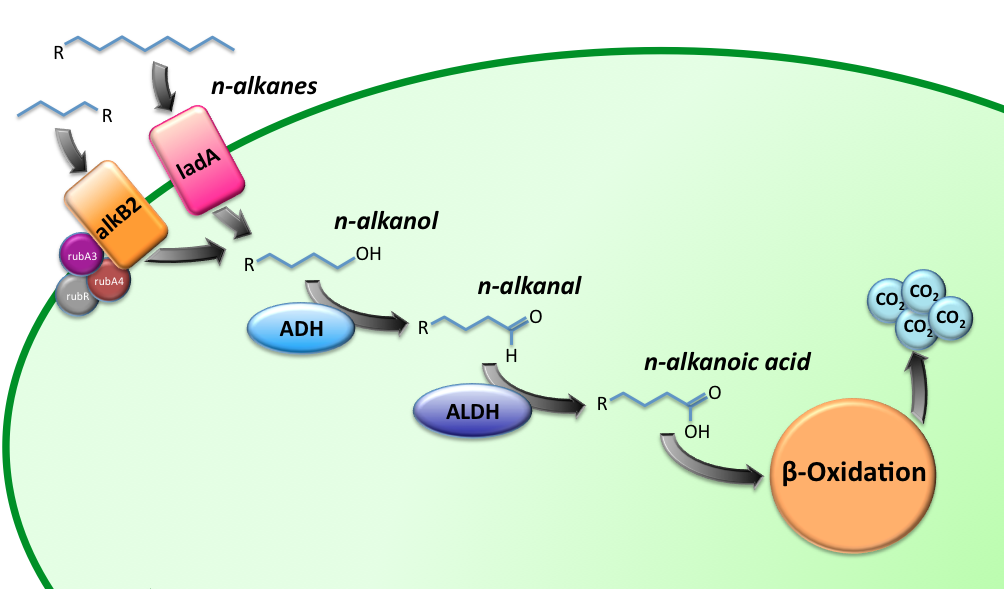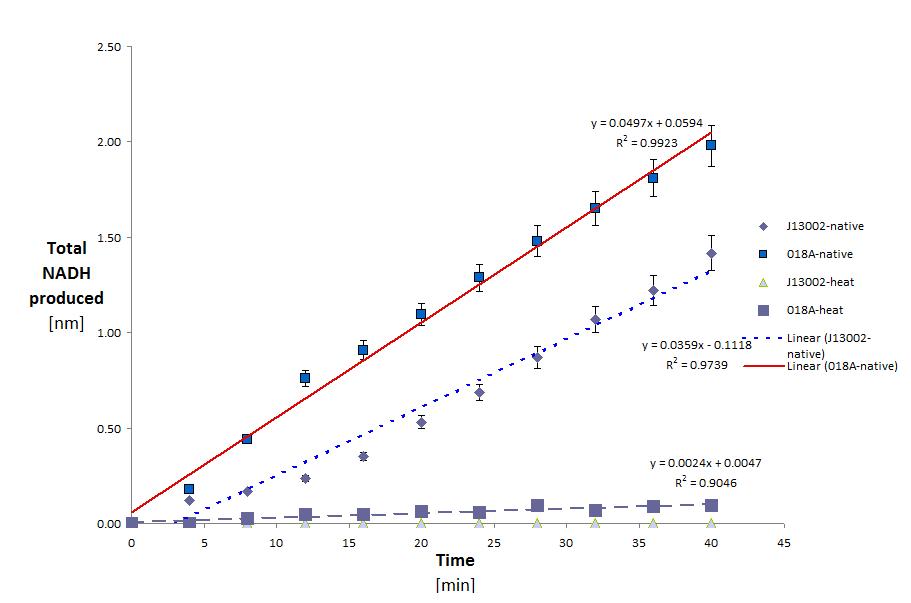Team:TU Delft/Project/alkane-degradation/results
From 2010.igem.org
Revision as of 15:50, 15 October 2010 by Ravandervalk (Talk | contribs)
Contents |
Alkb2 Cluster
LadA
ADH
ADH was tested with Dodecanal (C12)
This yielded the following results:
This shows two things. That E.Coli is partly able to degrade Dodecanal on it's own. And that this activity is greatly increased (38.4%) with the addition of ADH. It is also clear that eventhough ADH is from a thermophilic organism it loses most of it's activity after heating. (Although this activity could also be attributed to the host organism lacking the proper post translational modifications.)
 "
"

